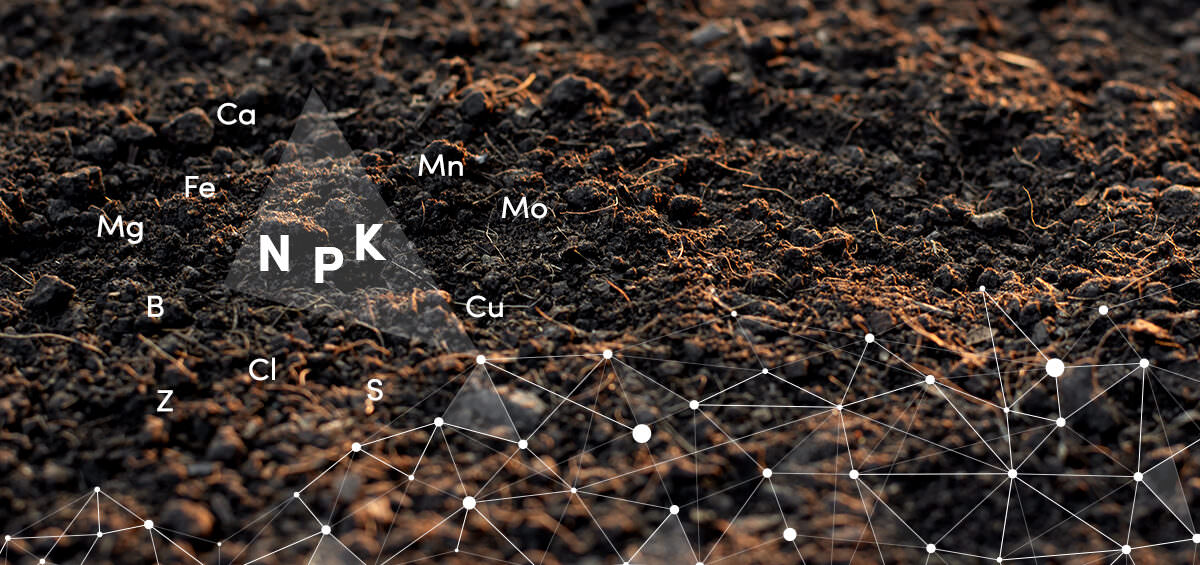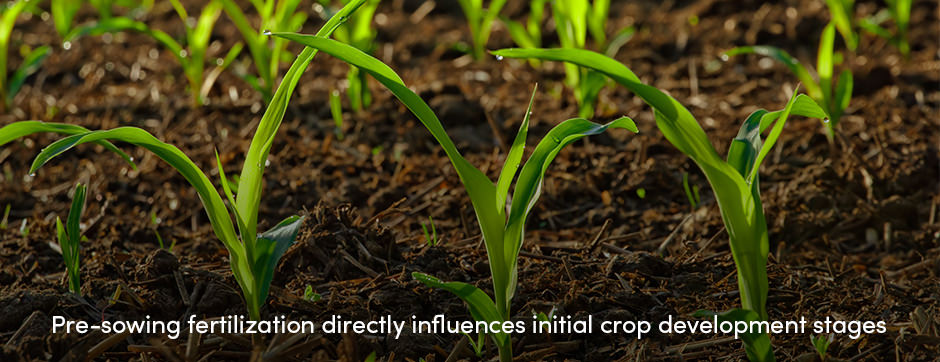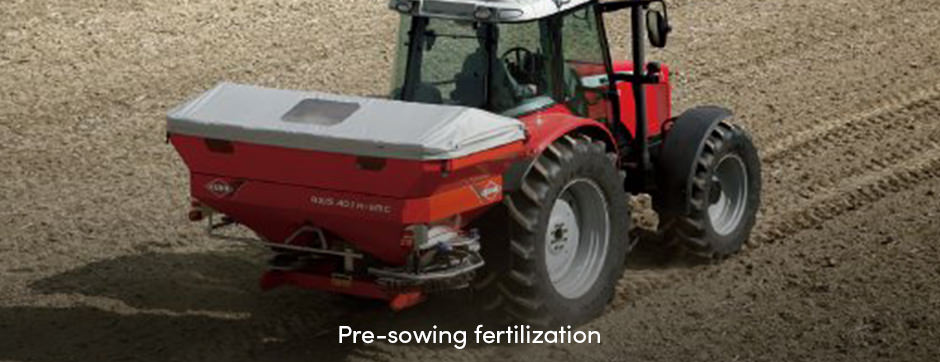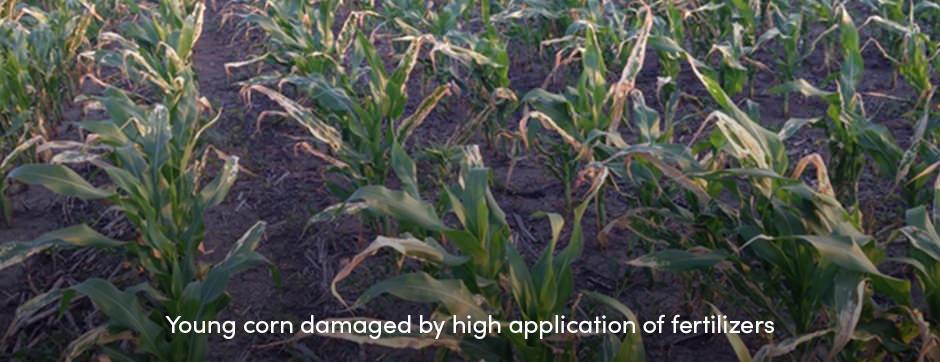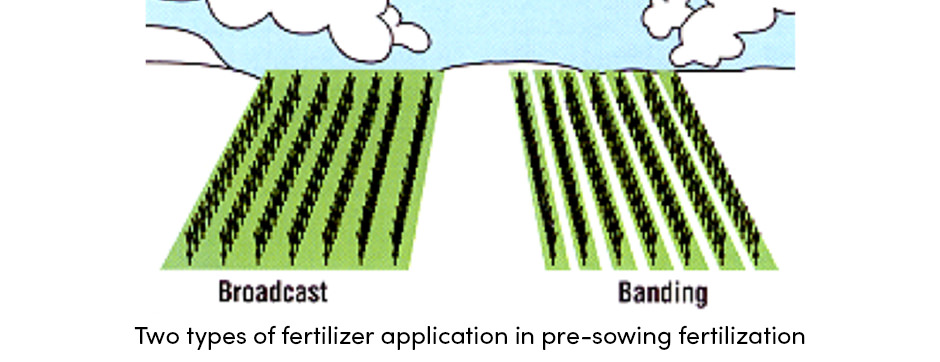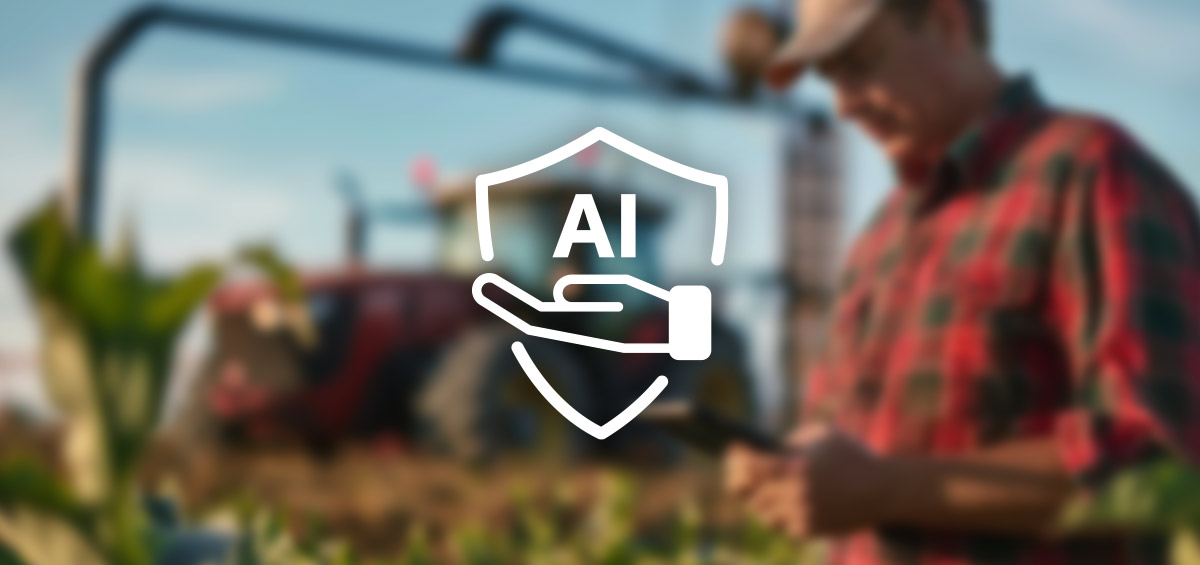Farmer’s race for higher yields starts long before the beginning of a crop’s life cycle. In aiming to reach the best crop production results, farmers always have to be one step ahead. Therefore, every successful farmer invests a lot of effort in sowing preparation practices.
Proper seedbed preparation depends on two essential factors:
- Soil management
- Crop nutrient management
The main purpose of soil management is to create well-prepared soil that manages weeds, recycles nutrients, and creates a straight, grained, structural and moist sowing layer. The main purpose of crop nutrition management is to ensure well-balanced quantities of nutrients during the whole crop life cycle.
The final touch, taking place before the sowing is pre-sowing fertilization. This practice is usually done immediately before the sowing. Still, some farmers add fertilizers at the moment of seedbed preparation.
What Does a Farmer Get With Pre-sowing Fertilization?
The main purpose of pre-sowing fertilization is to ensure balanced quantities of nutrients in a sowing layer.
In other words, pre-sowing fertilization strives to provide essential nutrients that are required for the initial crop development stages. Of this, pre-sowing fertilization directly influences root development and germination.
The ratio of essential nutrients (nitrogen, phosphorus, potassium) in pre-sowing fertilization is usually equal. For example: 15-15-15.
However, the exact ratio of nutrients largely depends on the application of nutrients during basic fertilization. For instance, let’s consider the case in which the total required quantity of phosphorus and potassium is applied during basic fertilization. In this case, pre-sowing fertilization requires application of only nitrogen.
Another important aspect to consider regarding pre-sowing fertilization is the differences when comparing it to the basic fertilization. For example, the amounts of nutrients in pre-sowing fertilization are much lower than in the basic fertilization. Therefore, pre-sowing fertilization is a practice that improves basic fertilization.
Finally, the best way to manage crop nutrients is to combine both practices. In doing so, it will be ensured that within the soil there will be plenty of nutrients on a lower, as well as a higher depth.
Top 3 Advantages of Pre-sowing Fertilization
There are three important reasons for practicing pre-sowing fertilization:
- To apply the nutrients when the crop needs them the most: at the beginning of its life cycle.
- To improve the incorporation of nutrients into the soil (nutrients applied after the sowing remain in the upper layer of the soil and hardly reach the root zone)
- It’s relatively easy to apply due to the fact that there are no crops on the field.
Are There Any Possible Disadvantages to Pre-sowing Fertilization?
Generally, if it’s managed properly, pre-sowing fertilization is a practice that improves soil nutrition. However, there are a few possible risks important to keep in mind when considering pre-sowing fertilization:
- Leaching of nutrients below the active root zone
- Losing phosphorus with the run-off if it’s not applied properly
- Volatilization of nitrogen as ammonium in the case that ammonia is applied close to the soil surface
- Too high of rates of fertilizers may damage the seedlings and crop
- Pollution caused by nitrogen leaching to ground water or phosphorus run-off.
- Fertilizers may also stimulate weed growth at the expense of the crop.
How to Manage Pre-sowing Fertilization?
In order to avoid the possible risks of pre-sowing fertilization, it’s essential to manage it properly from the beginning. First, it should be based on the results of a soil analysis. This practice will let the farmer know exactly which nutrients to apply as well as proper application rates.
Furthermore, there are two types of managing fertilizer placing:
- Broadcasting; uniform application of fertilizers throughout the entire soil surface (manually or with the use of machinery).
- Banding; application of fertilizers in bands (rows) before the sowing or planting, done mostly with the use of machinery.
The choice of the right placement practice depends on the soil type, as well as on climate and weather conditions. Therefore, sandy soils that hold fewer nutrients require lower rates of fertilizers. For this reason, banding is more appropriate for these types of soils.
After all, if it’s managed properly, pre-sowing fertilization improves the crop growth when it’s needed the most: from its early growth stages. Pre-sowing fertilization enables farmers to be one step ahead by ensuring the nutrients from the beginning.
Image sources: Wylie Manufacturing || AgFax
